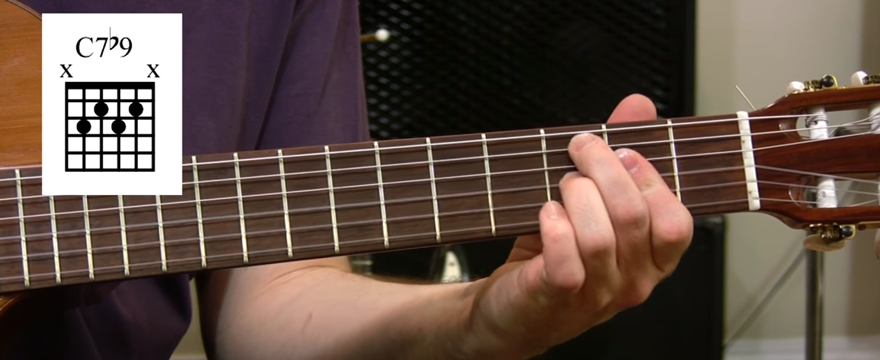In Part One of this Altered Chords lesson we studied the music theory behind the construction of the chords classified in the altered chord category. In Part Two, we will make a study of some of the most popular altered chord shapes used by guitar players…
Watch the video lesson to learn the correct sound and fretting technique with regard to building altered chord patterns on the guitar fingerboard.
ALTERED CHORD APPLICATION:
Each example will study important altered chord patterns that every guitarist needs to become familiarized with off of the sixth and fifth strings.
Read over each section shown below and practice fretting out each chord diagram using the suggested finger layouts provided.
DIMINISHED 5th: (♭5)
Dominant chords with a diminished (lowered) 5th contain intervals of a; Root, Major 3rd, Diminished 5th and Minor 7th. The 6th and 5th string examples given below contain two chord patterns, the standard dominant seventh chord, as well as, the conversion into a Dominant 7th altered chord with the diminished 5th, (♭5).
Example 1). Sixth String Root
Dominant 7 and Altered Dominant (♭5) Pattern
6th-String Root – Naming Note: 6th-String / 5th-Fret “A”
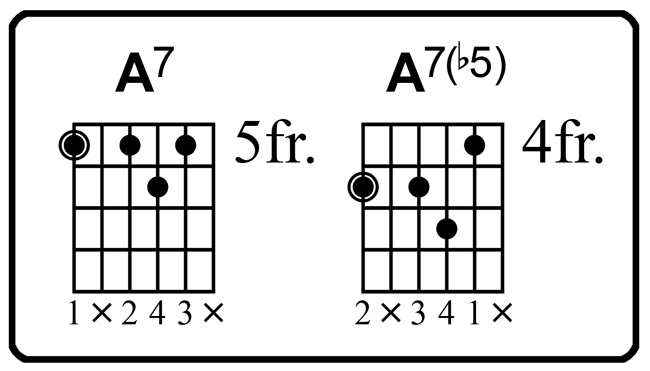
Example 2). Fifth String Root
Dominant 7 and Altered Dominant (♭5) Pattern
5th-String Root – Naming Note: 5th-String / 7th-Fret “E”

AUGMENTED 5th: (♯5)
Dominant chords with an augmented (raised) 5th contain intervals of a; Root, Major 3rd, Augmented 5th and Minor 7th. The 6th and 5th string examples given below contain chord patterns that include the standard Dominant Seventh chord, the Augmented Triad chord, and the Altered Dominant with the (♯5).
Example 3). Sixth String Root
Dominant 7 and Altered Dominant (♯5) Pattern
6th-String Root – Naming Note: 6th-String / 5th-Fret “A”
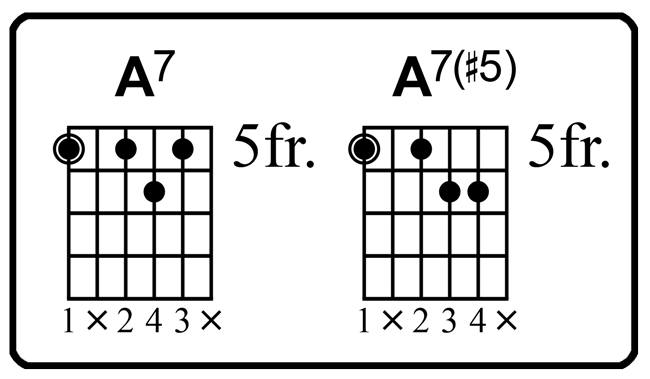
Example 4). Fifth String Root
Augmented Triad and Altered Dominant (♯5) Pattern
5th-String Root – Naming Note: 5th-String / 7th-Fret “E”

DIMINISHED 9th: (♭9)
Dominant chords with a Diminished 9th contain intervals of a; Root, Major 3rd, Perfect 5th, Minor 7th and Diminished 9th. The 6th and 5th string examples given below contain chord patterns that include the standard Dominant Seventh chord and the Altered Dominant with the (♭9).
Example 5). Sixth String Root
Dominant 9 and Altered Dominant (♭9) Pattern
6th-String Root – Naming Note: 6th-String / 8th-Fret “C”
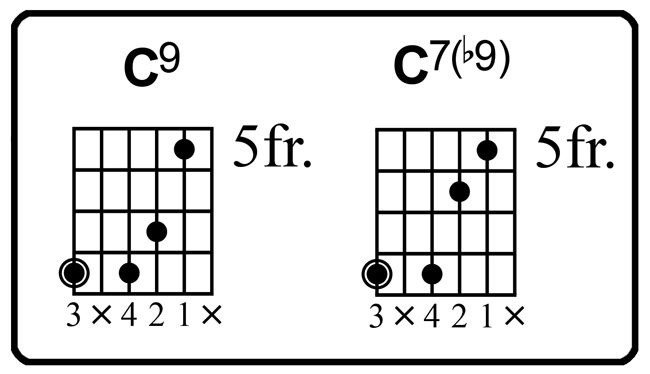
Example 6). Fifth String Root
Dominant 9 and Altered Dominant (♭9) Pattern
5th-String Root – Naming Note: 6th-String / 7th-Fret “E”
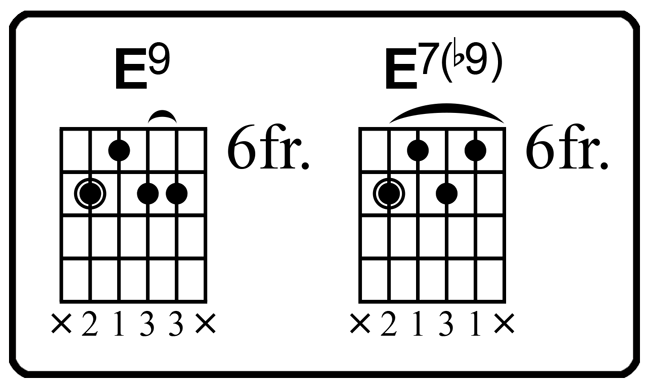
AUGMENTED 9th: (♯9)
Dominant chords with an Augmented 9th contain intervals of a; Root, Major 3rd, Perfect 5th, Minor 7th and Augmented 9th. The 6th and 5th string examples given below contain chord patterns that include the Altered Dominant with the (♯9).
Example 7). Sixth String Root
Altered Dominant (♯9) Pattern
6th-String Root – Naming Note: 6th-String / 8th-Fret “C”

CONCLUSION:
For those musicians that are interested in learning about playing jazz, the altered dominant chord types are one of the most vital chord categories to study. These chords are important to become familiar with because they will occur in so many jazz playing situations.
The altered dominant chords are most often used in jazz music to produce greater dissonance (tension) when song sections are resolving. For this reason, they tend to be applied in rather great abundance across nearly all styles of jazz music.
Additionally, the altered dominant chord types are also rather popular to find used in the music styles of; Funk and Soul music, and (in some cases) by certain artists in the music styles of Blues and Rock.
Download the handout:
- Click the button below to download the Altered Chords – Part Two handout
(access to lesson material will require a FREE membership)
